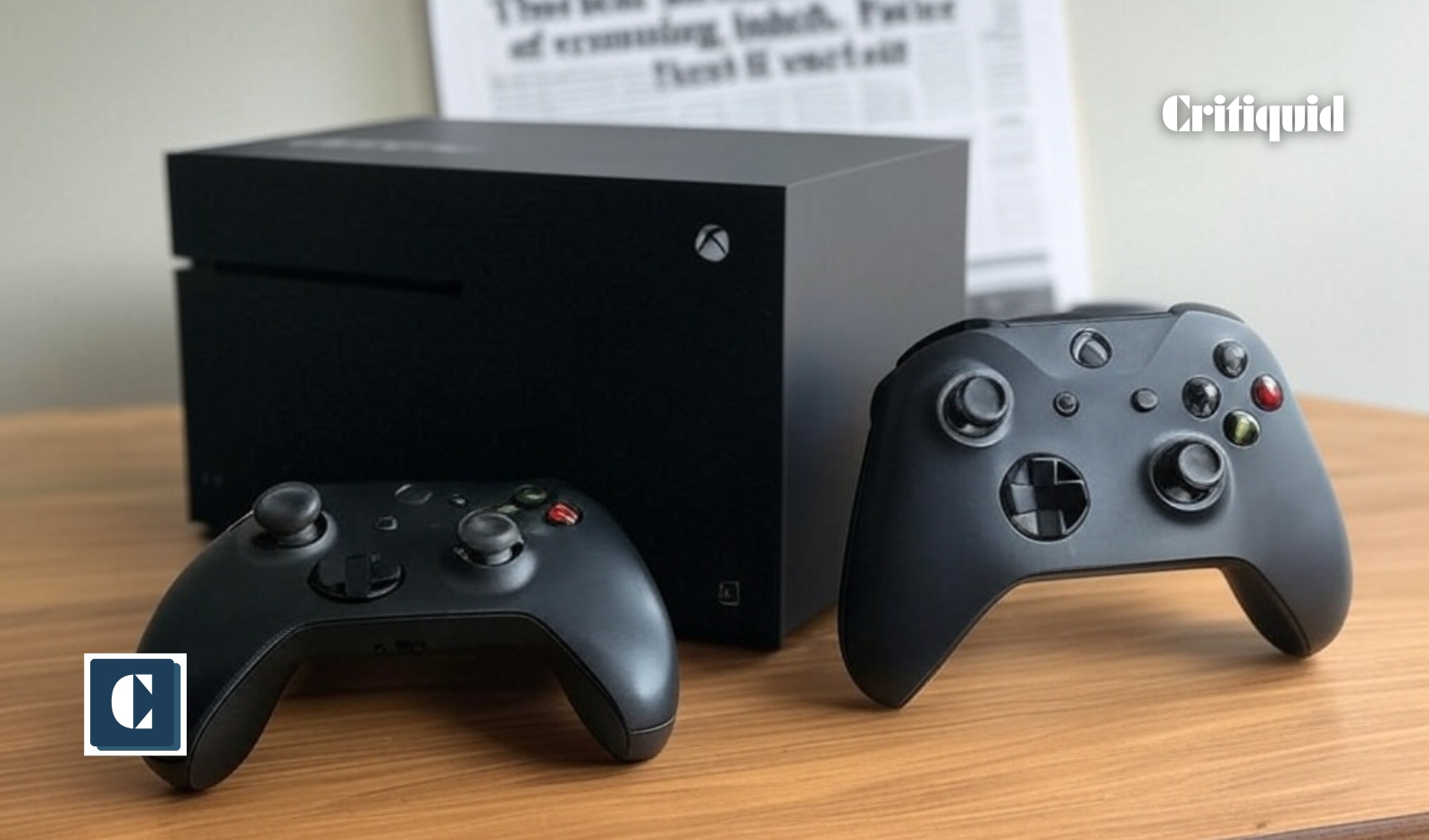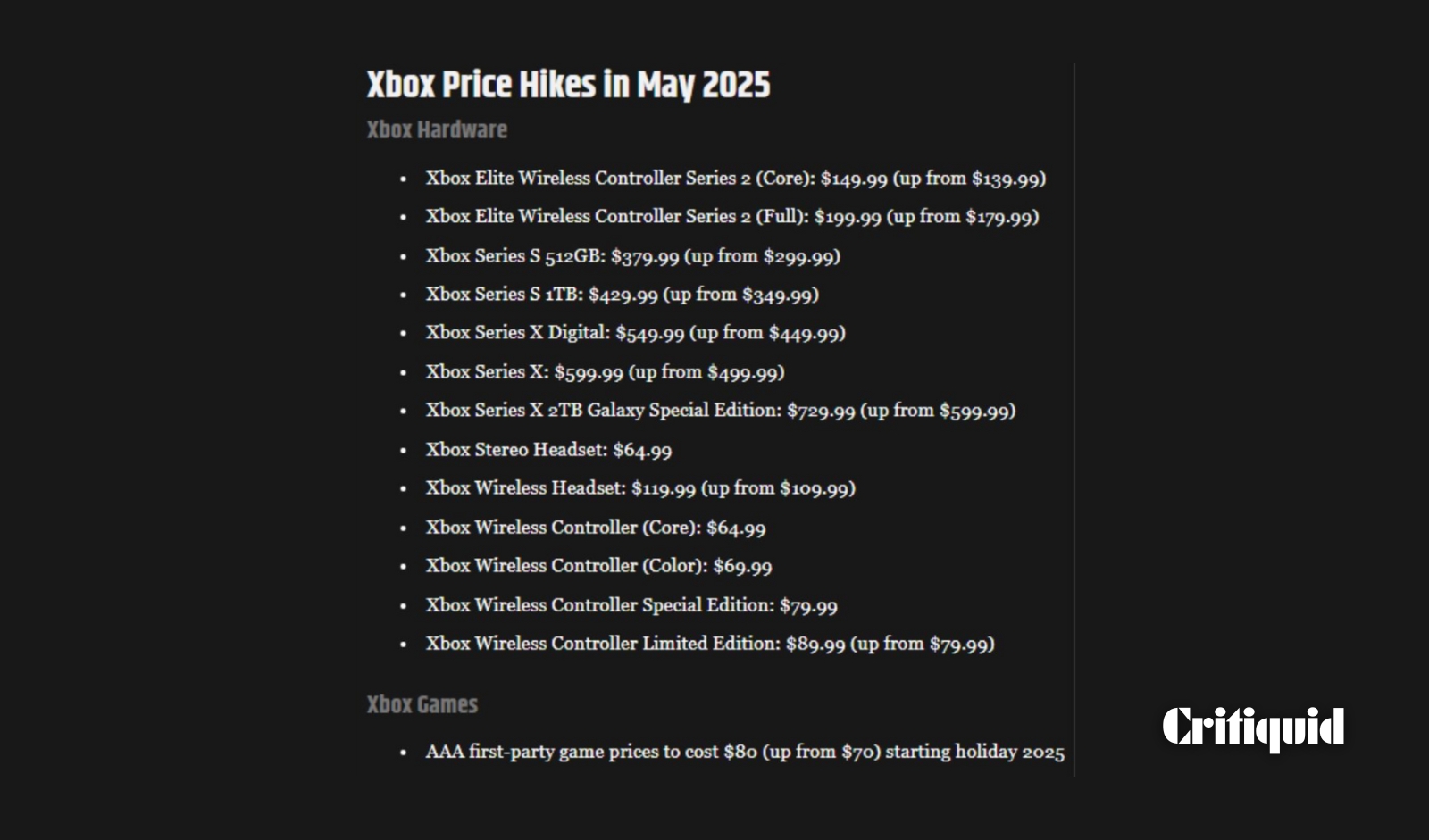Microsoft Implements Major Xbox Price Hikes Amid Global Economic Pressures

Microsoft has announced substantial price increases across its entire Xbox product lineup, marking one of the most significant pricing adjustments in the platform’s history. The changes, which took effect immediately following the May 1 announcement, impact consoles, controllers, accessories, and will extend to first-party games later this year.
Price Increases Across the Board
The price hikes affect all Xbox hardware, with the most dramatic increases seen in console pricing. In the United States, the Xbox Series X now costs $599.99, a $100 increase from its previous $499.99 price point. The digital-only Series X variant has similarly jumped $100 to $549.99. The more affordable Series S models haven’t escaped the increases either, with both the 512GB and 1TB versions seeing $80 price hikes, bringing them to $379.99 and $429.99 respectively.
The Galaxy Black Special Edition of the Xbox Series X with its expanded 2TB storage now commands a premium $729.99 price tag, reflecting a $130 increase.
Controllers and peripherals have also been affected, with standard controllers now costing between $65-90 depending on the model, representing increases of $5-40. The premium Elite Series 2 controllers now reach up to $200, while the Xbox Wireless Headset has increased to $119.99 in North America.

First-Party Games to Hit $80
Perhaps most concerning for consumers is Microsoft’s confirmation that starting with the 2025 holiday season, new first-party Xbox titles will be priced at $80, up from the current $70 standard. This represents the second price increase for Microsoft’s games in just two years, following a previous adjustment from $60 to $70 in 2023.
Global Impact
The price increases extend well beyond North America. In the United Kingdom, the Xbox Series S has seen a £50 increase to £299.99, while European markets face an €80 price hike. Australia and other regions worldwide are experiencing similar adjustments, though specific pricing varies by market.
Industry observers have noted that these increases come nearly five years into the Xbox Series X/S lifecycle, contradicting the typical pattern where console prices tend to decrease over time after launch.
Economic Factors at Play
In its announcement, Microsoft cited “market conditions and the rising cost of development” as the primary reasons for the price hikes. While the company did not explicitly mention tariffs, the timing coincides with significant uncertainty in international trade policies.
With most gaming hardware manufacturing occurring in China, current import tariffs to the US have reached as high as 145% for some electronics categories. Economists have predicted that these heightened tariffs will continue to increase costs for various consumer goods dependent on global supply chains.
Edhr Gonzalez of Rip Tear studios described the price increase as “inevitable” and driven by ongoing tariff disruptions, according to a BBC report.
Industry-Wide Trend
Microsoft is not alone in raising prices. Sony announced price hikes for PlayStation 5 consoles in multiple regions in April 2025, citing “challenging” economic conditions. This marked the second price increase for PS5 since its launch, with the previous one occurring in 2022.
Nintendo has also moved to higher pricing for its upcoming Switch 2 platform, with premier titles like Mario Kart World priced at $80. Nintendo has defended this pricing by emphasizing the value and content richness of individual games, suggesting prices would be decided on a game-by-game basis.
The simultaneous price increases across all three major console manufacturers suggest structural changes in the gaming industry’s economics rather than isolated business decisions.
Consumer Reaction
Consumer reaction to the price hikes has been predominantly negative. Gaming forums and social media have seen substantial discontent, with many gamers expressing frustration at what they perceive as increasingly inaccessible pricing.
Some players are adopting a “wait-and-see” approach, choosing to work through their existing game backlogs rather than invest in new hardware or titles at elevated prices. Others have suggested that this console generation may be their last, indicating potential disillusionment with the industry’s pricing trajectory.
One forum user lamented, “It’s like they don’t want people to buy them,” highlighting concerns about affordability and exclusion among the gaming community.
Microsoft’s Gaming Performance Context
The price increases come at a complex moment for Microsoft’s gaming division. While overall gaming revenue grew by 5% in the first quarter of 2025 (January-March), hardware sales declined by 6% during the same period. This continues a pattern seen in previous quarters, with hardware revenue declining by 29% year-over-year in Q2 FY25 (October-December 2024).
Microsoft has increasingly pivoted toward digital services, with Xbox content and services revenue growing by 8% in Q1 2025, driven primarily by Game Pass subscriptions and titles like Call of Duty. The company highlighted the success of games like Indiana Jones and the Great Circle, which has reached over 4 million players.
Future Outlook
Despite hardware sales challenges, Microsoft has not indicated plans to exit the console market. Phil Spencer has teased development of both a handheld device and a next-generation console targeting a 2027 release. Reports suggest this future console, rumored to be called “Xbox Prime,” will be “PC in essence but with a TV-friendly shell.”
Interestingly, Microsoft has maintained Game Pass pricing at current levels, potentially positioning the subscription service as a more attractive value proposition compared to individual game purchases. As game prices increase, the flat-rate access to a wide library of titles, including day-one releases of first-party games, may become increasingly compelling to cost-conscious gamers.
These substantial price increases represent a significant shift in gaming economics, reflecting broader industry trends and global economic pressures. For consumers, these changes mean gaming as a hobby is becoming more expensive across all major platforms, with uncertain implications for accessibility and market growth in the months ahead.
